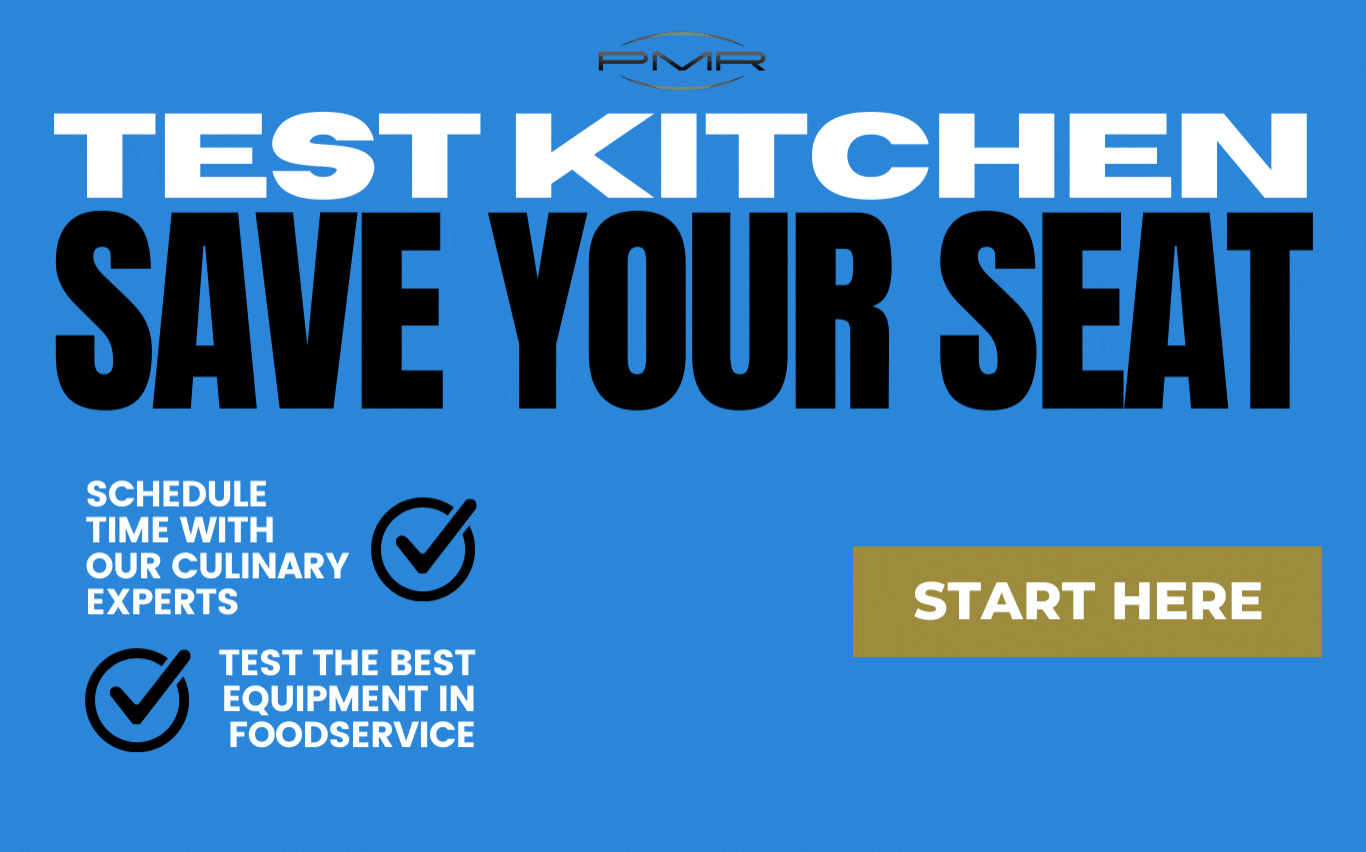Welcome to the PMR Foodservice Blog
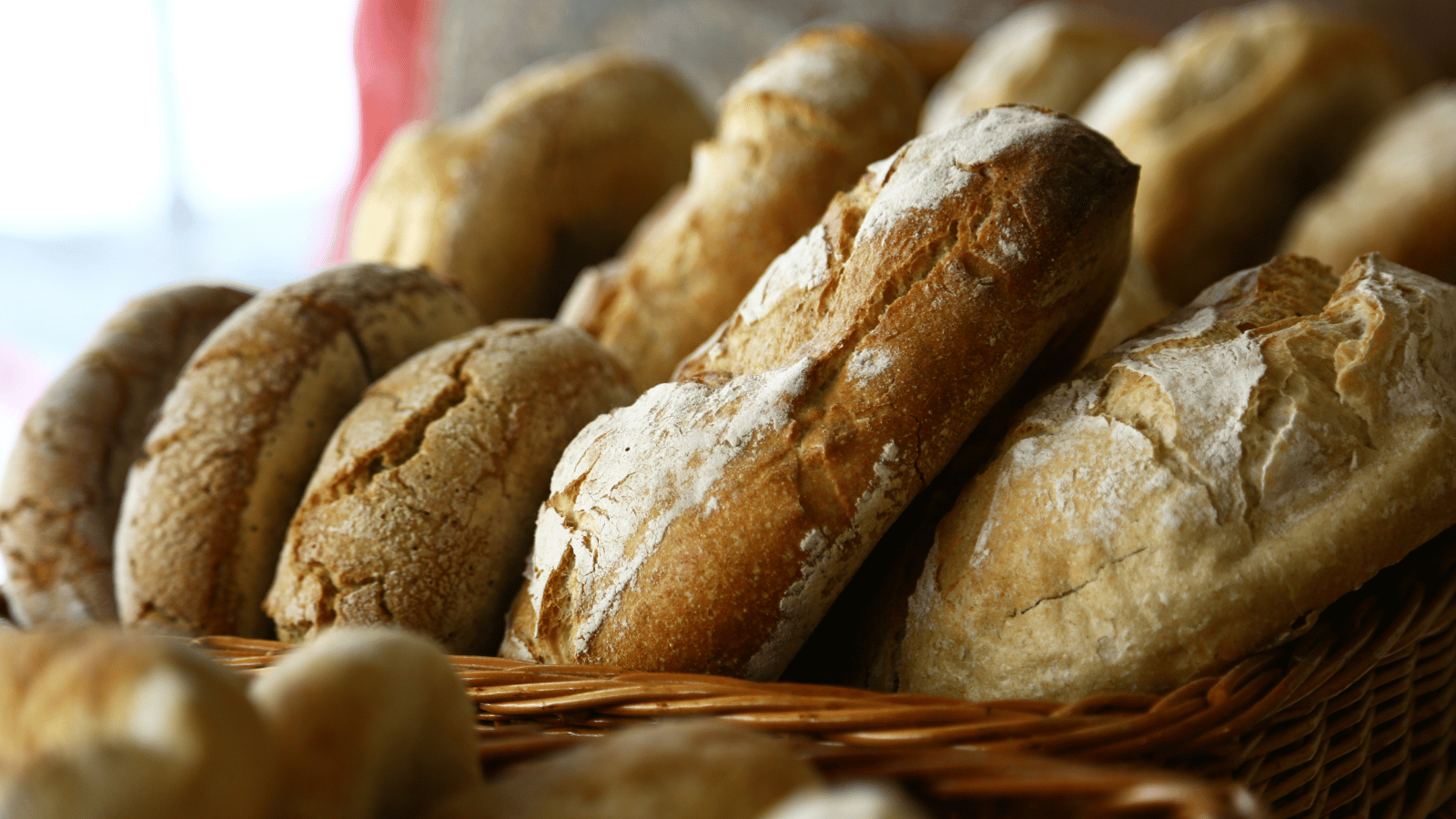
Finding the Right Ventless Solution That Works For You
A vent hood is typically needed when cooking in a commercial kitchen to capture grease, heat, and smoke from the grill or burner. However, in some circumstances it is either impossible or too expensive to install a new ventilation hood. Operators may accomplish more without spending money on ducting thanks to the fact that ventless foodservice equipment is now far more powerful and versatile than in the past.
Why Ventless Foodservice Equipment Works Better
Whether a restaurateur is building out their dream kitchen or a chef is considering a pop-up eatery, ventless cooking is an ideal choice for several reasons.
First, because the equipment doesn't require a hood, it's all self-contained. So, operators can place cooking equipment wherever needed without being limited by existing infrastructure.
The other advantage of not requiring ductwork is that ventless equipment can pass safety regulations more easily. This makes getting permits for new kitchen spaces less stressful for operators.
Finally, ventless equipment means an operator doesn't have to worry about cleaning and maintaining a vent hood. Grease and other particles can build up in the ductwork, making regular cleaning necessary to prevent fires or toxic contaminants in the air. A ventless system makes it much easier to trap and remove these particles after cooking.
Ventless Equipment Options
Modern technology has allowed manufacturers to create cooking equipment that delivers high-quality dishes using high-tech systems. Here are some of the top ventless machines available for commercial use.
Vulcan Combi
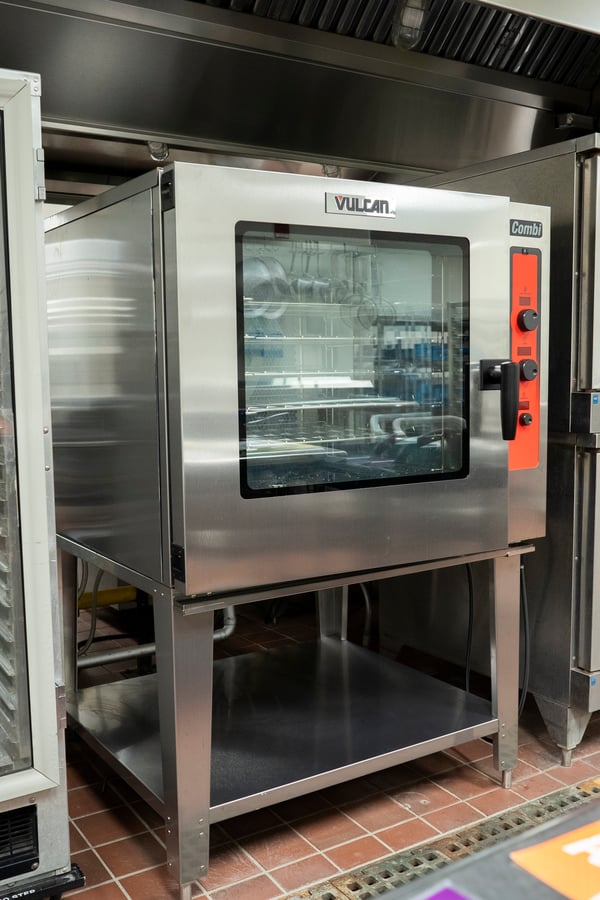 Some ingredients must be baked, while others must be air-fried or steamed. What if a chef could do all those things in a single machine by touching a few buttons or programming a few controls?
Some ingredients must be baked, while others must be air-fried or steamed. What if a chef could do all those things in a single machine by touching a few buttons or programming a few controls?
Vulcan Combi ovens are the ultimate all-in-one tool that can easily handle virtually any dish. Best of all, the high-tech features mean that workers of all skill levels can prepare ingredients without overcooking or ruining them. Chefs can even choose from analog dial systems or a modern touchscreen for maximum convenience.
IBEX
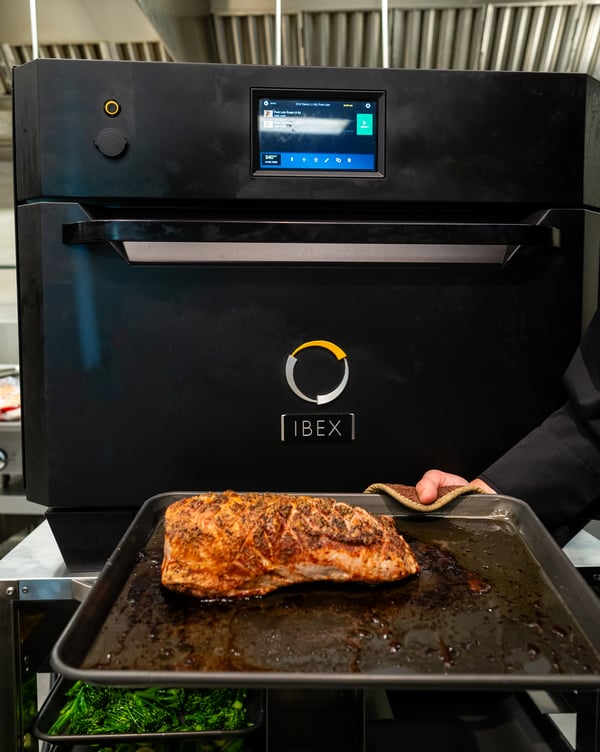
One of the challenges of cooking is knowing how to adapt to the heat levels in an oven. Even high-end models will have hot and cold spots, so the chef must know how to cook dishes evenly, regardless.
IBEX high-speed ovens take the guesswork and experience out of the equation. With high-tech sensors, the range can tell which parts are cooler than others and adjust the temperature accordingly. So, even if the chef can't continuously monitor a dish, the IBEX can take over automatically.
Plus, since it's a high-speed oven, it's perfect for busy commercial kitchens where time is always in short supply.
Ovention
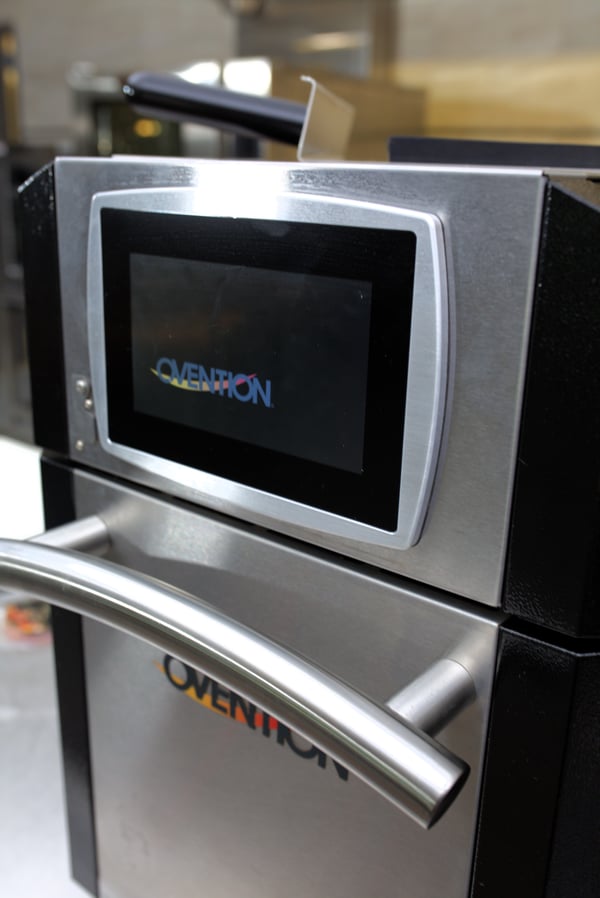
Some dishes require specialty cooking equipment to deliver consistent results. For example, a chef wouldn't use a pizza oven to broil chicken, just as they wouldn't use a convection oven to make a slow-broiled roast.
Ovention has multiple oven designs to help operators deliver better quality without needing extra infrastructure. Since these are ventless cooking options, chefs can deploy them wherever necessary to increase their menu output. Now, upgrading the kitchen doesn't have to cost a fortune. Instead, a few Ovention ventless ovens can do the trick.
What to Consider When Choosing Ventless Foodservice Equipment
Although modern ventless equipment offers high-tech solutions, not all models are identical. Here are the essential factors that operators must consider when comparing different machines.
Size
It is simpler to install a ventless oven because there is no ducting required. Finding the ideal size to meet the requirements of a foodservice operation is crucial, though. Larger models that can accommodate many racks for mass cooking may take up a lot of room. On the other hand, the cooking capacity of the smaller, countertop variants is less. Therefore, it's crucial to be realistic about the needs of the commercial kitchen.
Cooking Capabilities
Some ventless equipment, such as the Vulcan Combi, can handle more than one cooking style. Other models are designed to cook in only style or best for one dish. Operators must weigh the pros and cons and determine which would benefit their restaurant's menu best, both now and with future updates.
Customization
One of the primary advantages of ventless equipment is that it can often come with multiple customizable features. This way, chefs can build their dream machine from scratch and get all the features they want or need. Customization also eliminates any unnecessary elements that may inhibit the cooking process.
Discover how ventless solutions can help your foodservice business and schedule time in our test kitchen with a PMR expert:
Subscribe Here!
Lists by Topic
- Restaurants (23)
- PMR Preview (18)
- K-12 School Nutrition (12)
- Beverage (8)
- Vulcan (7)
- Healthcare (5)
- Hospitality (5)
- Ovention (5)
- Duke (4)
- Trends (4)
- Ventless (4)
- Winco (4)
- Convenience Store (3)
- Food Safety (3)
- Hatco (3)
- ITW (3)
- PMR (3)
- Perlick (3)
- Traulsen (3)
- Waring (3)
- Bakery (2)
- Carlisle Foodservice (2)
- College & University (2)
- General (2)
- Griddle (2)
- Prince Castle (2)
- Spaceman (2)
- Takeout & Delivery (2)
- Thermo-Kool (2)
- Araven (1)
- Charbroiler (1)
- Choice Equipment Company (1)
- Correctional (1)
- Dinex (1)
- Dish Machines (1)
- Frying (1)
- G.E.T. Serveware (1)
- Hobart (1)
- Holidays (1)
- QSR (1)
- RATIONAL (1)
- Recipe (1)
- Silver King (1)
- Titan Stainless Steel (1)

